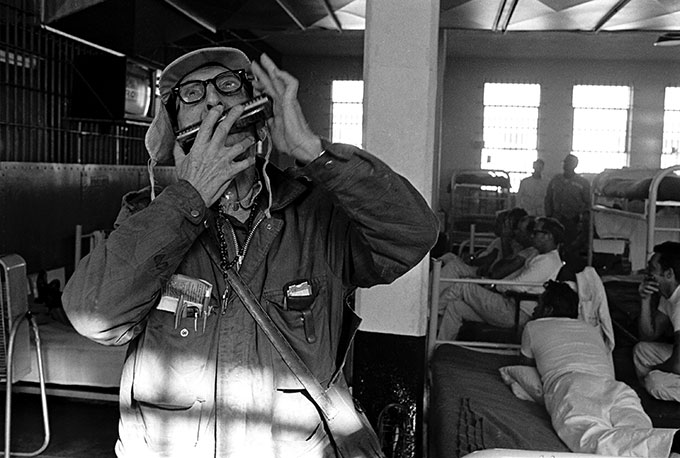Being There
by J. Tim Raymond

A retrospective of Bruce Jackson’s photography at the Burchfield Penney Art Center
Along with 300 photographic works currently exhibited at the Burchfield Penney, Bruce Jackson displays the length and breadth of a truly polymathic education. In addition to his tenure as SUNY Distinguished Professor and James Agee Chair in American Culture, he has published more than 30 books on issues of social/political/cultural commentary. In collaboration with his wife Diane Christian, he has made award-winning documentary films shown in theaters internationally and on public television. He has had more than 20 solo photography exhibitions from Little Rock, Arkansas, to Oslo, Norway. Closer to home, the working couple hosts a monthly series of films at the Market Arcade on Washington Street.
The Burchfield Penney installation allows each work displayed an identity in an edition of an imagination. Pictures link gallery to gallery in an episodic framework, allowing the viewer to track each scene in a kind of retrospective rondo. Dividing 50 plus years worth of visual perception into categories, Jackson begins with his earliest ethnological investigations of Southern prison farms, where as it develops he sees his course as a visual documentarian come to span his professional life. Over the years, the images retrieved also weave in and out of a career in academia (which Jackson regards along with the prison system as an American mainstream social institution). His well-travelled camera often focuses on a wide range of social events of the 1960s and 1970s—noted writers, artists, and musicians alighting for a spell at UB along with longstanding keystones of Western New York intellectual life. It is possible to trace through his lens entire eras of social upheaval, from the Civil Rights Movement to protests against the Vietnam War to Women’s Liberation to efforts toward prison reform, as well as more recent issues of environmental degradation and historic preservation right up to the present here in Buffalo.
But it is the images of incarceration that hit hardest. White-clad figures stare out at the photographer and by extension the gallery viewer as if the little round lens offered them an escape, a kind of wormhole to freedom. The guard’s workaday poses on horseback relive every cliché of the prison movie genre yet are still unsettling in the candid starkness of black and white as the convicts before them bend to their slave-like labors. Jackson’s chronology of men on death row reveals what often seems a timeless, endless crusade against “the other,” those whose fates, in accident of color or lineage, are seemingly foresworn, whose birthrights are challenged almost at the outset and through the worst of choices must live their responsible hours sequestered in harsh light, their manhood secure only in hardworked muscles, in amateur tattoos, wearing sacramental prison whites to their last day.
Then there are the knives…all species of shivs displayed in one long glass case enfilade, each weapon with its dull sheen pedigree, lovingly, painstakingly filed to a point of penetrating force, its hand-worn hilt wrapped tight in multiple layers of masking tape. Beyond the sense of camaraderie, of family, of place, the life well lived of a public intellectual, it is the visual impact of the lives not-well lived that the artist’s photographs have brought to the public with riveting clarity and compassion.
Click to see more of Jackson's photos on "The Back Page."
blog comments powered by Disqus|
Issue Navigation> Issue Index > v12n10 (Week of Thursday, March 7) > Being There This Week's Issue • Artvoice Daily • Artvoice TV • Events Calendar • Classifieds |









 Current Issue
Current Issue